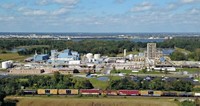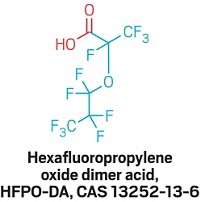Advertisement
Grab your lab coat. Let's get started
Welcome!
Welcome!
Create an account below to get 6 C&EN articles per month, receive newsletters and more - all free.
It seems this is your first time logging in online. Please enter the following information to continue.
As an ACS member you automatically get access to this site. All we need is few more details to create your reading experience.
Not you? Sign in with a different account.
Not you? Sign in with a different account.
ERROR 1
ERROR 1
ERROR 2
ERROR 2
ERROR 2
ERROR 2
ERROR 2
Password and Confirm password must match.
If you have an ACS member number, please enter it here so we can link this account to your membership. (optional)
ERROR 2
ACS values your privacy. By submitting your information, you are gaining access to C&EN and subscribing to our weekly newsletter. We use the information you provide to make your reading experience better, and we will never sell your data to third party members.
Persistent Pollutants
PFAS pollution from Chemours plant distributed by air
Study finds PFOA and GenX-related chemical are widespread downwind of West Virginia facility
by Cheryl Hogue
May 28, 2020
| A version of this story appeared in
Volume 98, Issue 21
Two toxic, persistent per- and polyfluoroalkyl substances (PFAS) used at a Chemours factory in West Virginia pollute soil and groundwater as far as 48 km downwind of the plant, researchers report (Environ. Sci. Technol. 2020, DOI: 10.1021/acs.est.9b07384).
The findings demonstrate that wind-blown air emissions from the plant have been a main route of distribution for the two PFAS into the environment, says study co-author Linda K. Weavers, an environmental engineer at Ohio State University. The study’s data also show that the atmospheric transport of PFAS from the plant is more widespread than previously thought, Weavers says.
Discharges of wastewater into the Ohio River were once thought to be the primary way the facility released PFAS into the environment.
For decades, the plant, owned by DuPont from the middle of the last century until it spun off Chemours in 2015, released perfluorooctanoic acid (PFOA), which was used as a processing aid in the production of Teflon brand polytetrafluoroethylene, a durable nonstick plastic. PFOA is linked to cancer, high cholesterol, and other health condtions in people.
A decade ago, DuPont switched from PFOA to a novel fluoroether called GenX, which Chemours continues to use at the plant. In the environment, GenX hydrolyzes into hexafluoropropylene oxide dimer acid (HFPO-DA). The health risks of consuming HFPO-DA are unknown.
Researchers from Ohio State and the US Environmental Protection Agency conducted the new study by collecting water and soil samples downwind of the facility and using mass spectrometry to detect and quantify PFAS. Ohio State undergraduate Jason E. Galloway was the lead author.
The new findings emphasize the importance of wind distribution of PFOA and give scientists a heads up that air-deposited GenX-related HFPO-DA may be moving through soil and water, says Cora J. Young, a chemist who studies the atmospheric transport of fluorinated compounds at York University in Toronto, and was not involved in the study.
Chemours, which faces lawsuits over PFAS contamination from the plant, declined to comment on the study.





Join the conversation
Contact the reporter
Submit a Letter to the Editor for publication
Engage with us on Twitter